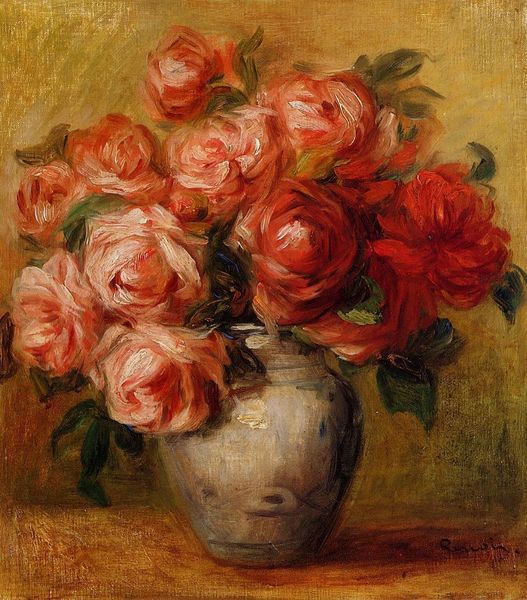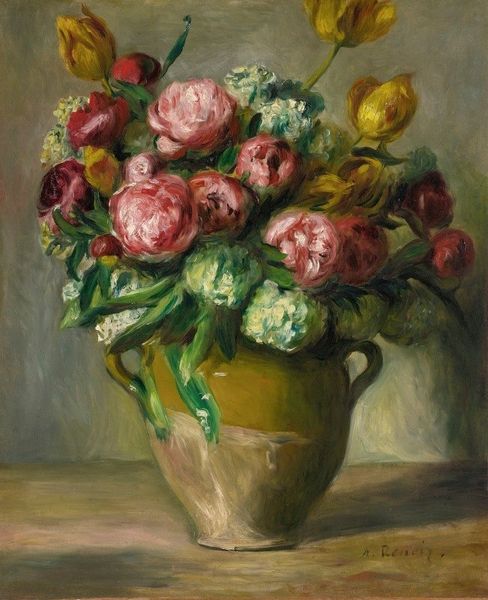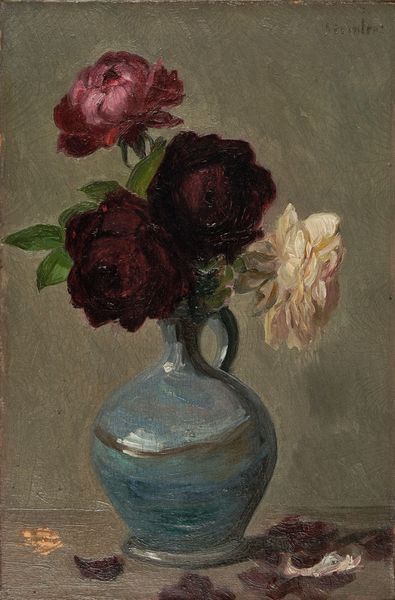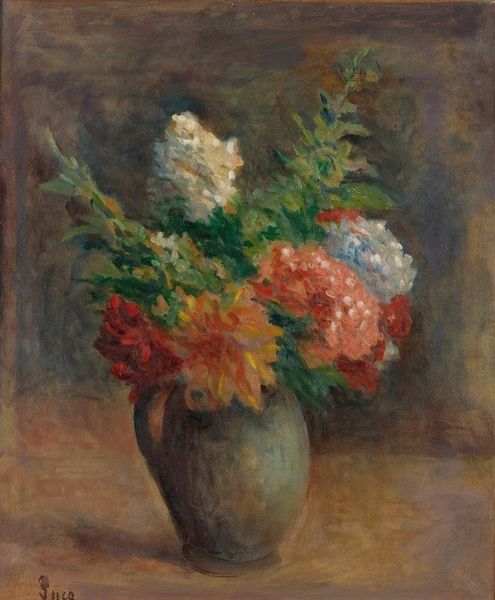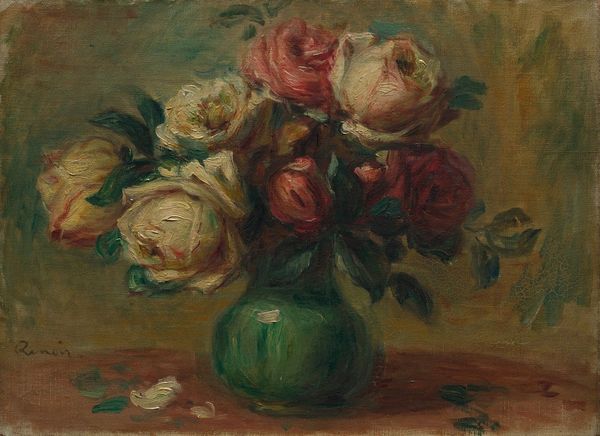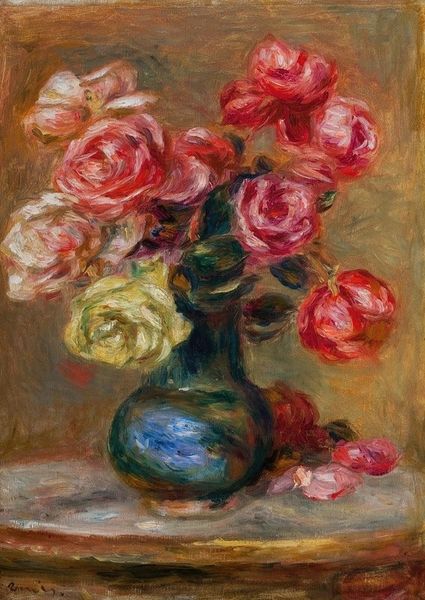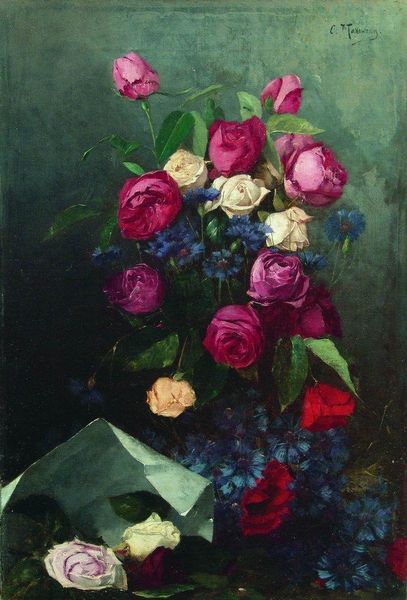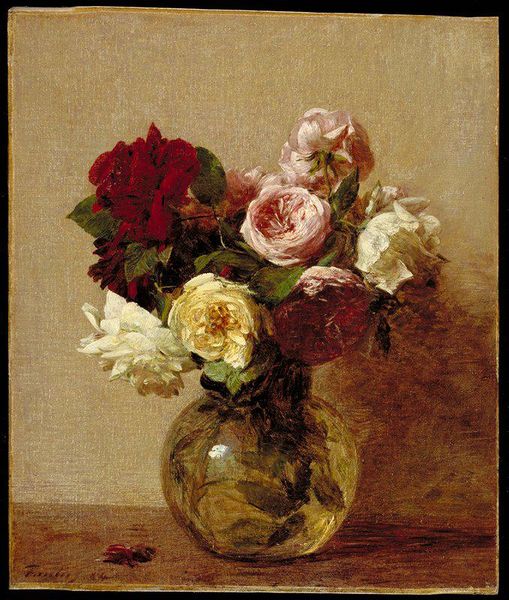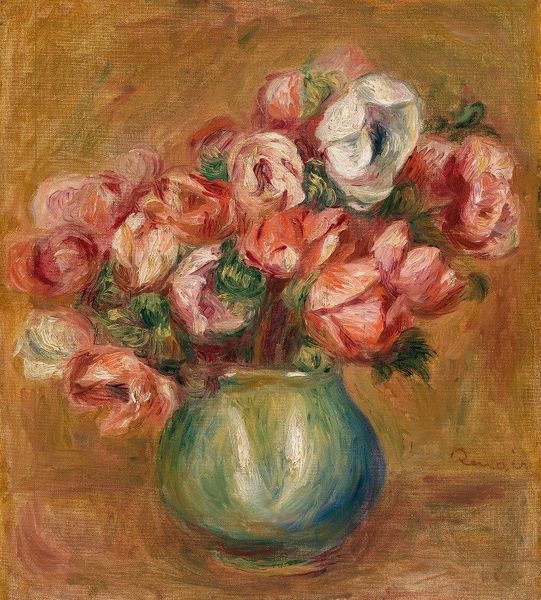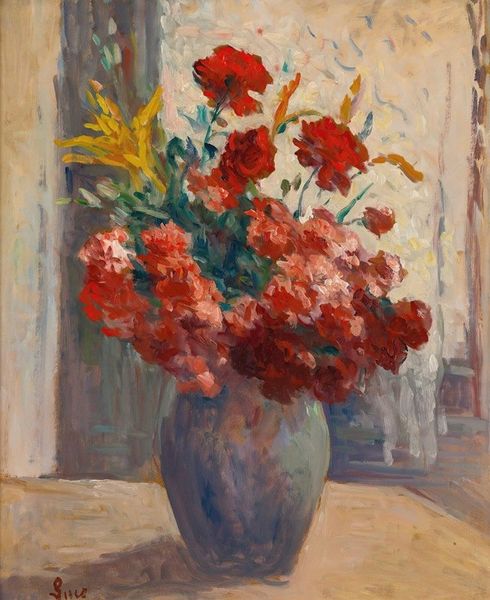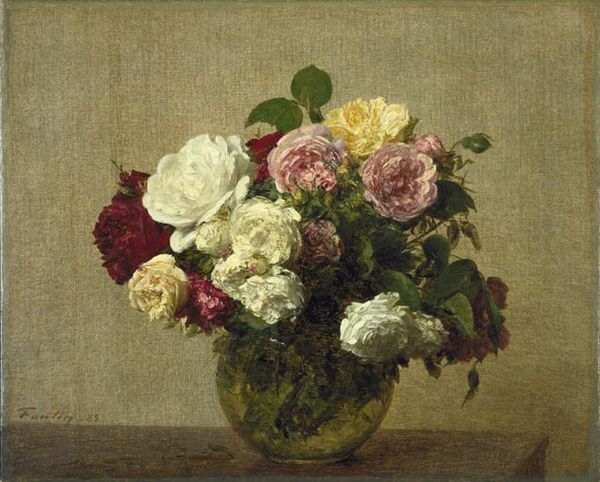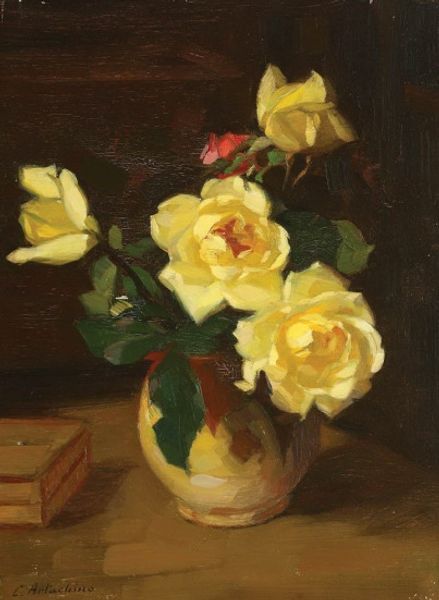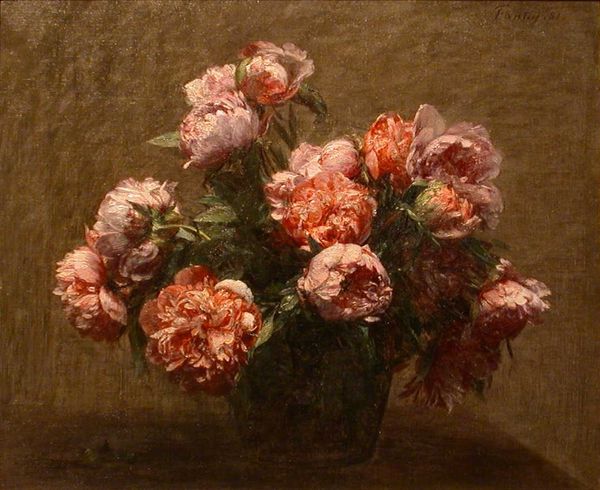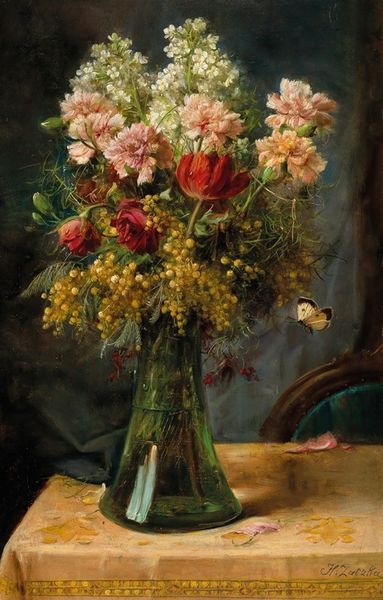
Copyright: Public domain
Curator: Emil Carlsen's "Red Roses," painted in 1895, offers us a classic still life in oil. It's a fascinating example of late 19th-century American painting. Editor: The immediate impression I get is a sense of muted passion. The red is deep, almost bordering on somber, and the roses themselves seem to be at varying stages of bloom and decay, really drawing attention to the subject and creating a subtle story. Curator: Indeed. We need to consider this artwork within the broader context of Carlsen's career and the prevalence of still life painting at the time. He trained in Europe but was also trying to find uniquely American voices and subjects, navigating those influences in interesting ways. It also shows his academic training alongside his more poetic sensibility. Editor: How do you see the intersection of romanticism and realism at play? Is it that push and pull creating tension between the symbolic weight of the flower, and the objectness that Carlsen is concerned with? Curator: Absolutely, flowers, roses specifically, have such laden symbolism that Carlsen can either choose to tap into the meaning making, or actively push against the common notions in culture and art history. Furthermore, the romantic sensibility in its use of shadow and diffused lighting enhances that emotional feeling in the overall painting. Editor: It also made me consider who could own and exhibit work like this in the late 1890s? Who had the financial and social means to enjoy a painting of red roses? Was it displayed privately in domestic settings? How do spaces like domestic homes and even the shape of that simple pale vase give shape to gender roles or notions of beauty? It's hard not to place works in conversation with broader, sometimes unacknowledged systems and beliefs of the late 19th century. Curator: It speaks volumes, I think, about the societal aspirations and decorative culture. The rose became accessible not just as subject matter but a commodity itself at the time, aligning with a certain ideal of femininity and bourgeois domesticity. Editor: To summarize, “Red Roses” is more than a pretty picture; it is also a lens through which we can explore intersections of gender, class, and artistic identity. Curator: A lens which brings both artistic nuance and an intimate view of 19th century aesthetics.
Comments
No comments
Be the first to comment and join the conversation on the ultimate creative platform.
